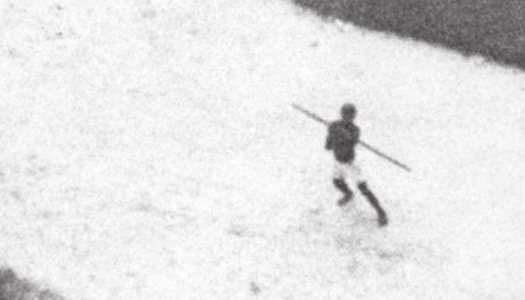
Previously secret CIA report documents spear attack against surveillance plane

In the 1960s, during the civil wars and political upheaval that rocked what is today the Democratic Republic of the Congo, the United States Air Force flew frequent low-level reconnaissance missions over missionary outposts to check on their condition and safety. One flyover in 1964 drew an attack from the ground that was captured in part by an aerial photograph: a thrown spear.
The episode, documented in a 1979 article for the Central Intelligence Agency’s internal publication, Studies in Intelligence, “President Truman and the Congolese SAM”—classified as “SECRET NOFORN” (Not for Foreign Dissemination)—was recounted to Harry S. Truman as part of a periodic intelligence briefing provided to the former president by the administration of Lyndon Johnson.
Declassified a decade ago, the article was recently resurfaced during archive scouring by MuckRock Executive Editor Pat Brown, though it was also included in a book by the article’s original author, former CIA Senior Imagery Analyst Dino Brugioni.
At the time, the CIA and Belgian governments were in the early phase of planning a rescue operation for American and European hostages being held in Stanleyville (today named Kisangani). Deputy Director of Central Intelligence General Marshall S. Carter briefed Truman, and, seeking as usual to inject his brand of humor (with perhaps a touch of casual racism) into the briefing, latched onto the photo after it was brought to his attention by Brugioni’s team at the National Photographic Interpretation Center, the precursor to the National Geospatial-Intelligence Agency.
Showing Truman the photo, Carter said that the photo depicted:
…an unrevetted surface to air missile system. The missile, a Mark 1, Mod 1, has a manual inertial guidance system, a mobile launcher with a one-sling power velocity on takeoff, and considerable pucker power on impact. It is, however, of questionable accuracy and has an undetermined C.E.P [circular error probability]. The refire capabilities have not yet been determined.
Brugioni recounted in the CIA article that Truman had been “delighted” by the presentation but said, “I hope someone has advised the pilots to fly a little higher… Just imagine the effect on a young Air Force pilot if his career service record showed he had been downed by a spear.”
The incident was probably one of the few “humorous” things about the Congo Crisis—the result of long-running colonial abuses in the Congo—and the Kisangani Mutiny that followed. It was a bloody period of proxy warfare between the US-, Soviet-, and Cuban-backed mercenaries and militias. But given the way things are going with drones these days, the Mark 1 Mod 1 SAM may find its way back into favor with a much wider audience.




